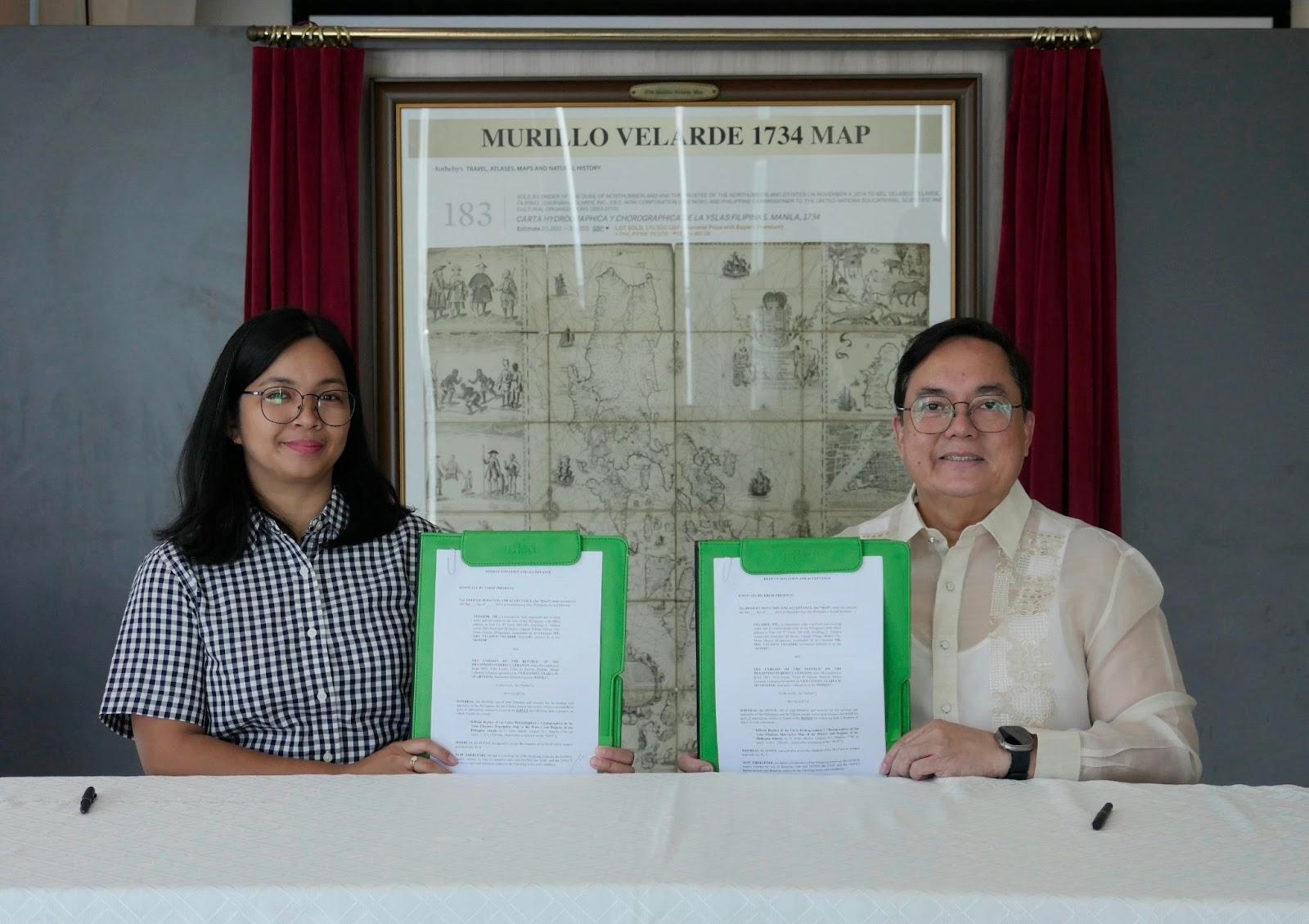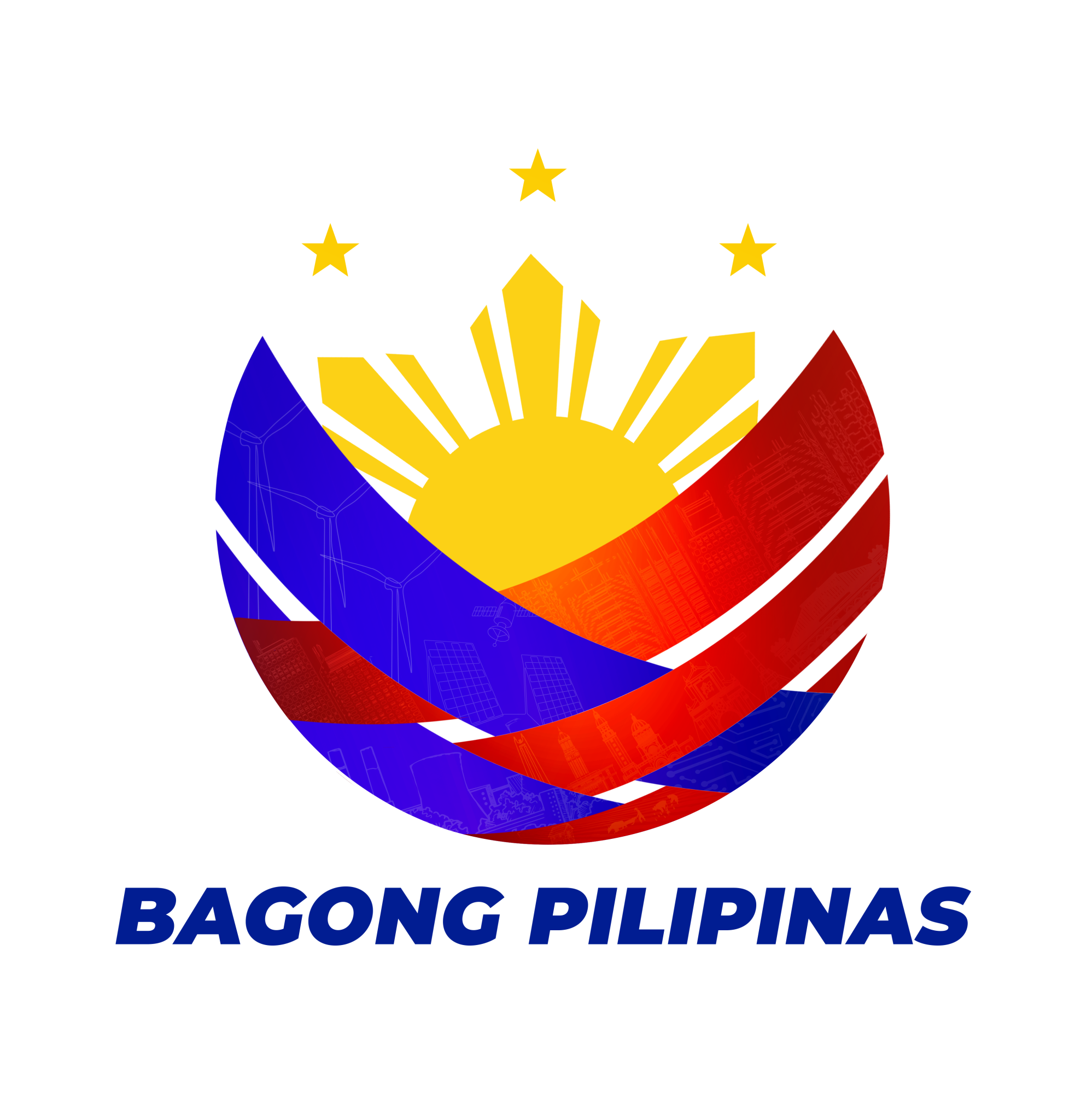PH Embassy in Lebanon Receives Official Replica of Murillo Velarde 1734 Map

(Photo: Mr. Mel V. Velarde and Vice Consul Glaiza M. Quarteros signed the Deed of Donation and Acceptance during the turnover of the official replica of Murillo Velarde 1734 Map)
BEIRUT 18 August 2023 – The Embassy of the Philippines in Beirut, Lebanon received an official replica of the Murillo Velarde 1734 Map, the first scientific map of the entire Philippine archipelago.
Asian Institute of Journalism and Communication (AIJC) and NOW Group Chairman Mel V. Velarde turned over the replica of the map, referred to as the “Mother of All Philippine Maps,” to Third Secretary and Vice Consul Glaiza M. Quarteros on 11 August 2023.
Mr. Velarde acquired the map from a Sotheby’s auction in London in 2014 and donated it to the Philippine government in 2017 through a Deed of Donation. The Philippine Embassy in Lebanon now holds an official replica of the ancient map that was presented among the pieces of evidence before The Hague in the Netherlands, where the Philippines—under the leadership of the late former Foreign Affairs Secretary Albert del Rosario and retired Senior Associate Justice Antonio Carpio—sought a fair and unbiased resolution to the maritime dispute.
During the turnover, Mr. Velarde expressed his gratitude to the Philippine Embassy in Lebanon for requesting the replica, which the Embassy intends to display in its showroom at the Embassy’s new Chancery in Beirut to commemorate the seventh anniversary of the Philippines’ historic victory at the Permanent Court of Arbitration under the United Nations Convention on the Law of the Sea (UNCLOS) at The Hague. Mr. Velarde hopes that more Embassies will be able to help increase awareness about the significance of the map in Philippine history.
Mr. Velarde and Vice Consul Quarteros signed the Deed of Donation and Acceptance during the turnover. They were joined by AIJC Trustee and NOW Corporation Vice Chairman Francis Xavier L. Manglapus and AIJC Research, Policy, and Advocacy (RPA) Director Therese San Diego Torres, who signed as witnesses.
About the Murillo Velarde 1734 Map
The Murillo Velarde 1734 Map or Carta Hydrographica y Chorographica de las Yslas Filipinas, first published in Manila in 1734, is regarded by historians as the “Mother of All Philippine Maps.” It was made by the Spanish Jesuit Friar Pedro Murillo Velarde together with two Filipinos—Francisco Suarez, who drew the map, and Nicolas dela Cruz Bagay, who engraved it.
This is the first scientific map of the entire Philippine archipelago. It is flanked by two side panels, with each panel containing six vignettes depicting scenes of people and places in the country. The shoal “Panacot,” now known as Bajo de Masinloc or Scarborough Shoal, and the islands of the Spratlys, which are referred to as “Los Bajos de Paragua,” are shown in the map as part of the Philippines.
Supreme Court Senior Associate Justice Antonio T. Carpio learned that the map was among the 80 heirlooms owned by the Duke of Northumberland, Ralph George Algernon Percy, which were scheduled for auction by Sotheby’s London on November 4, 2014. Justice Carpio recommended to Filipino technology entrepreneur and educator Mel Velasco Velarde to bid for the map so that it could be displayed in a public museum in the Philippines. Mr. Velarde joined the bid and won.
The Murillo Velarde 1734 Map played a crucial and integral role in the Philippines’ July 2016 landmark victory at The Hague, where the country lodged its case against China before the Permanent Court of Arbitration under the United Nations Convention on the Law of the Sea (UNCLOS) for claiming Scarborough Shoal and the Spratly Islands in the West Philippine Sea.
Mr. Velarde believes that ownership of the map is every Filipino's birthright, hence his donation of the map to the government as a gift to the Filipino people.
Replicas of the map are now being donated by Mr. Velarde to various government agencies, academic institutions, and private organizations as part of a national public awareness campaign on the map and its significance to Philippine cultural heritage.
About the Asian Institute of Journalism and Communication
Established in the Philippines in 1980, the Asian Institute of Journalism and Communication (AIJC) was founded on the philosophy that communication is a vital development resource to be used to advance the common good. AIJC has three strategic programs: the Graduate School, which offers master’s degree programs in communication and journalism; the Research, Policy, and Advocacy Unit, which undertakes policy and action research and project management in various development areas; and the Professional Development Program, which provides training for journalists, communicators, development managers, and professionals from the public and private sectors. Visit https://www.aijc.com.ph for more information. END

